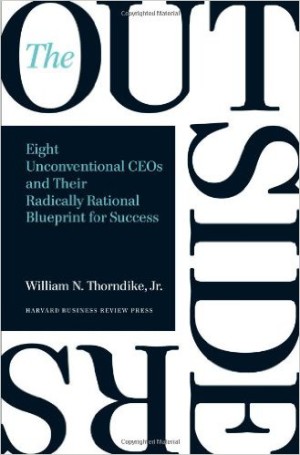This is the third post looking at how we can take the resource allocation checklist of The Outsiders by William Thorndike and translate it to the nonprofit world. Below are the next three on the list. Click here and here to see the other posts.

5. Focus on after-tax returns.
Obviously nonprofits do not have to pay taxes. So what can nonprofits learn from this advice?
Some corporations allocate resources toward investments that make a high profit but leaves them exposed to high taxes, which reduces their overall return on investment. So the wise corporations might take a slightly smaller return on investment if it means paying a lot fewer taxes. They run the math to see which is, in the long run, the better investment.
Nonprofits do not always think in terms of overall return or long term impact. For instance, they might drill a thousand wells in Africa, a huge “profit” as they define their work. But then the IRS comes along (metaphorically of course) and asks them to pay for all the maintenance on those pumps and pipelines. Suddenly that “profit” looks a lot more expensive than originally calculated.
That doesn’t mean they shouldn’t be drilling those wells. It simply means they have to calculate their “profit” from a long term perspective.
In the competitive world of nonprofit fundraising, a lot of folks get caught up in the “pre-tax profit” of making a big splash and attracting more donors. They overlook — sometimes willingly — the long term sustainability of what they do. It’s the nonprofit version of a Bernie Madoff scheme.
6. Set conservative cash and debt levels so you don’t put the organization at risk.
Not much to add here. Set a budget that makes conservative assumptions of costs, income, and risks, then ruthlessly follow it. And quickly make adjustments as needed.
7. Use a decentralized model for your management.
This is another easy one. There are two key factors in a decentralized management system.
First, it allows people “on the ground” to make quick decisions. Hire good people, resource them to do their best work, and let them go for it. Obviously there are some constraints, but minimize centralized control so people really feel like they own the mission of your organization.
Second, a decentralized model keeps the big shot leaders — whether pastors or executive directors or CEO’s — humble and thrifty. The book detailed story after story of CEO’s who were wildly successful yet NOT on the cover of every business magazine. And their corporate operations were lean to the point of cheap. Nonprofits can learn a lot from this decentralized model.
Tomorrow I’ll finish the series with the last three items on the checklist. Thoughts so far?

